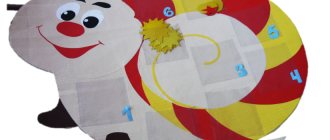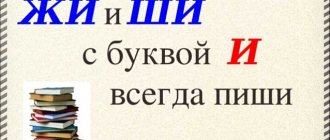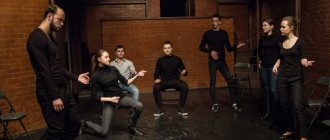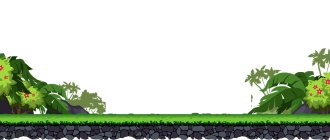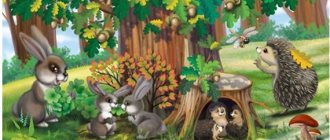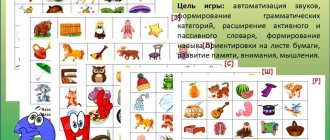Vowels and consonants
PREDICTED RESULTS:
• children will learn to freely express their thoughts;
• learn to distinguish between vowels and consonants, pronounce them clearly and clearly;
• get acquainted with the fusion of a consonant sound and a vowel, its graphic representation;
• learn to identify merging syllables in a word, naming the sounds from which they are formed;
• learn how to correctly syllable a word;
• become familiar with a syllable consisting of one vowel sound;
• will learn to make diagrams of words consisting of a merging syllable and a vowel sound, merging syllables and adjacent sounds.
DURING THE CLASSES
1. Updating knowledge
— What sounds did you become familiar with in the last lesson? (We are surrounded by many sounds: creaking, rustling, rustling, everything has its own sounds.)
But each word also consists of sounds that are in strict order. These are speech sounds. Today we will understand the sounds of human speech. What are they?
2. Motivation for learning activities
- Look at and name the objects. What sounds do you hear when naming the pictures on the board?
Motorcycle: Rrrr! Cat: Meow! Boy: Ah!
3. Work on the topic of the lesson
“I’ll tell you a sound, and you come up with a picture in which an object can make that sound.”
Alternately, the teacher calls [a], [y], [o], [i], [s], [e].
- Let's help each hero pronounce these sounds. How are they pronounced?
Listen to a poem about them.
All singers and female singers sing using these sounds. Let’s sing the song “A Christmas tree was born in the forest” starting with [a], [o], [u], [i], [e], [s].
Sounds that are pronounced easily, freely, with the help of the voice, are called... (Vowel sounds. These sounds are easily drawn out, sung.)
Now listen to N.M. Betenkova’s poem about sounds and try to remember it.
A, O, U, E, Y, I. (Children pronounce the sounds in a sing-song manner.)
The vowels are mine. (They spread their arms and press them to their chest.)
It's not difficult to count them. (Count fingers.)
There are exactly six vowel sounds. (Show six fingers.)
We will sing this song and remember the vowel sounds.
In the word mind, the first sound [u] is a vowel. The second sound is [m]. Will it be public? (No. This sound is pronounced with a voice, but with obstacles, difficulties. It is consonant.)
I name the words, you clap when you hear a word starting with a vowel sound: stork, car, iris, lesson, doll, Olya, echo, cone.
What follows is a reverse game. Children clap only when the word begins with a consonant sound: morning, movie, flashlight, aster, games, puppy, rhinoceros.
— To prevent vowel and consonant sounds from being confused, we will use a red square instead of a vowel sound in the diagrams. Say the word lesson. Divide it into syllables. (Lesson.)
Tell me about the first syllable. What can you tell us about the second syllable? (This is the syllable -rock. It has three sounds: [р-о-к].) We lay out sound cards: [р] - consonant sound - white square; [o] - vowel sound - red square; [k] - consonant sound - white square.)
Read the word lesson according to the diagram. Let's spread the cards so that we get two syllables. Which syllable is stressed? Which sound is stressed? (On the second syllable, on the vowel sound [o].)
What vowel sound is unstressed? (In 1 syllable, sound [y].)
What have we learned about vowel sounds? (Vowel sounds in a word can be stressed or unstressed. The stress always falls only on the vowel sound.)
The same applies to the word school.
— We’ll call our crossword “Be-ge-mot.” Under the picture “Hippopotamus” there are 7 empty cells in a line, the cells with consonant sounds are darkened. (Do this together with the children). Say this word slowly and check the number of sounds in this word.
I will label the consonant sounds with letters and put them in the boxes. Check if we have identified the consonant sounds correctly.
Please note that from the consonants downwards there are cells in which the names of animals and birds should fit.
Look carefully - in the pictures there are geese, a tiger, mice, a squirrel. Determine the place of these animals in the crossword puzzle. Say the word and put dots in the boxes. Attach a picture of the corresponding animal below.
What sounds do all these words begin with? (With consonants.)
What sounds are highlighted in red? (Vowels.)
Consider the diagrams that are compiled for the crossword puzzle. Determine which word's diagram is missing?
Complete the crossword puzzle.
- Put emphasis in the diagram. Which syllable contains the unstressed vowel sound? Which syllable has a stressed vowel?
- What two groups are sounds divided into? (Vowels and consonants.)
Remember the poem about vowel sounds. How many vowel sounds do we know? (6 vowel sounds.)
Look at the pictures: crayfish, catfish, beetle, cheese, whale, mayor. Hold up the red card and clearly name the vowel sound in each word.
Vowel sounds are sung, drawn out, pronounced freely, openly. How many vowel sounds have we identified from words? (Six sounds.)
What other sounds are there in Russian speech? (Consonant sounds.)
Let's open with. 15 textbook. Let's quietly approach the river, walk onto a hillock and sit down under a spreading tree. It will be convenient to talk here. Which tree bent over the river and spread its kind branches over us? Listen and guess the riddle: “He’s standing over the water shaking his beard.” What is this? (Willow.)
Perform a sound analysis of the word i-va. What is the first syllable? Second? How many sounds are in the first syllable? What sound is this? Say it. (This is a vowel sound[s].)
Make a diagram representing this sound. (Children raise the red square up.)
What sounds does the second syllable consist of? Say it slowly so that all sounds are heard clearly.
Children, one after another or in chorus, pronounce the syllable -va.
- What sounds does it consist of? (From the consonant sound [v] and the vowel sound [a].)
These two sounds, consonant and vowel, merge when pronounced. The syllable -va is pronounced in one breath, two sounds are pronounced one after another, as if merging together. This sound is called merging, for example pa, shi, but, lu. We will denote the merger of a consonant with a vowel as follows: Let’s make a diagram of the word willow
Now let's move on. We cannot cross to the other side of the river until we lay out the diagram of a very necessary word. Guess the riddle: “I am on that shore and on this shore. I’ll help you cross the river.” What is this? (Bridge.)
Say the word. How many syllables does it have? (The first sound [m] is a consonant sound - put a white square.)
Second sound? Third? Name the last sound.
Do the sounds in this word merge? (Yes.)
How do we denote a fusion syllable?
Children replace two squares with a single fusion syllable card.
- What happens to the sounds [s] and [t]? (They are simply attached to a merging syllable.) They are adjacent to a merging syllable.
Let's cross the bridge to the other side and quietly approach Grandfather Makar. Say your grandfather's name: Ma-kar. Make a diagram of this word.
Children independently create a diagram of the word Makar.
- Name the first syllable. What pattern did you use for this syllable? (Merge syllable, consonant [m] and vowel [o].)
Work with the second syllable proceeds similarly.
Next, exercises are performed to consolidate patterns with merging syllables and adjoining sounds.
- What fish will Grandfather Makar catch now? Is this fish a threat to all the little river fish? (Pike.)
Say the word. Perform a sound analysis of the word. Make a diagram of the word pike. Explain why the diagram was drawn up this way. (The result is a pattern of two merging syllables.)
Who splashed into the water so noisily? Who flapped their wings and screamed like that? Who scared away all the fish for Grandfather Makar? Listen to the riddle and find out who we met on the way: “Long neck, red paws. It pinches your heels, run without looking back.” Who is this? (These are geese.)
Listen to the wonderful poem by N. Kostarev.
Ha-ha-ha! - the goose cackles.
I'm proud of my family!
- For goslings and goose
I keep looking and can’t see enough.
- Tell me who the family of geese consists of? (Goose, goose, goslings, goslings.)
Say any word of your choice and create a sound pattern yourself.
What is another name for birds that can swim well? (Waterfowl.)
- Let's leave the river and go to a cozy house. Listen, who is it that screams so loudly and loudly, gathering his family to rest? Guess the riddle: “I sat on the fence, sang and shouted. Everyone gathered and he fell silent.” Who is this? (This is a rooster.)
What should we call this group of birds? (These are poultry.)
Name the rooster's entire family. (Chickens, rooster, chickens.)
They are very good at getting worms out of the ground, but what do they not know how to do? (Swim.)
Let's return to the picture “Chickens” (p. 14). Say this word syllable by syllable.
Perform a sound-letter analysis of the word. Read the diagram.
The teacher leads the pointer along the sound pattern, and the children clearly pronounce all the sounds.
— What other poultry can we see in the yard? (Turkeys, ducks, chickens.)
Read: “The turkeys met at the willow: / Look how beautiful you and I are!” What unites all these birds? (They are homemade.)
What birds look like handkerchiefs in the sky? (Pigeons.)
What kind of birds are these: domestic or wild? (Pigeons can be either domestic or wild.)
During the war, pigeons were used to deliver mail. Carrier pigeons always return home. Perform a sound-letter analysis of the word pigeons. Why is the word interesting? (It has 3 merging syllables.)
Look at page 15. What birds have we not talked about yet? (About everyone. Or: they forgot about the wasps.)
Who are wasps? (Insects. An insect has 6 legs.)
Who do we see in the foreground of the picture? What are they doing? Write a story about children. Give them names. Make diagrams. Remember that people's names are written with a capital letter. Show this on the diagram.
But then evening descends on the village. It's time for us to return to the city. We need to hurry to the station. On the way, Roma got caught in a bush... and his trousers were decorated with a magnificent brooch. Guess what kind of plant this is?
A child is reading. A word diagram is drawn up.
He grew up angry and prickly in the field,
Needles in all directions.
(burdock)
Larisa quickly made a huge burdock for her head... (A hat.) Say the word hat in chorus.
Sima decided to smell these beautiful little blue thorny flowers, and suddenly the girl waved her arms and hid behind us, oh-oh. Who scared the girl? (Wasp.)
Make a diagram for the word wasp. Check the textbook.
The children laugh and say to Sima: “If you don’t know the ford, don’t poke your nose into the water, Sima.” When do we say that? Use this proverb in your speech. Our wonderful journey has come to an end!
4. Reflection on learning activities
— What two groups are all the sounds of human speech divided into? How do we pronounce vowel sounds? Consonant sounds?
What two sounds form a merging syllable? Can two adjacent consonant sounds form a merging syllable? If we pronounce a consonant sound after a vowel sound, will it be a merging syllable?
LiveInternetLiveInternet
Quote from the_swan
Read in full In your quotation book or community!
DIDACTIC GAME “LIVING SOUNDS”
PURPOSE OF THE GAME: 1. Formation of a full-fledged sound side of speech: a) development of articulation skills, b) correct sound pronunciation, c) reproduction of syllabic structure, d) development of phonetic perception; 2. Mastery of the elements of literacy; 3. Interconnected formation of phonetic-phonemic and lexical-grammatical components of the language. EQUIPMENT: models of houses made of chipboard, models of sounds in the form of men - “Sounds”, schematic models of sounds in the form of circles in red, blue and green with details - nose, eyes and mouth, showing the position of the lips and tongue when pronouncing a certain sound, object pictures , chips. This game guide is intended for children of older preschool age. GAME RULE 1. “Which house does sound live in?” Several previously studied models of sounds in the form of little men - “Zvukovichki” - are displayed in front of the children. The child chooses “Sound”, pronounces the sound correctly, names the letter that corresponds to this sound and hangs it in the model house: vowel sounds “live” in the red house; in blue - consonant hard sounds; in green - soft consonant sounds. For each correctly completed task, the child receives a chip. The winner was the one who most correctly “distributed” the sounds into the houses. GAME RULE 2. “Who is bigger?” The teacher shows the children a model of a previously studied consonant sound, for example, the sound “P” and asks them to “settle the hard and soft sound “P” into their own houses - blue and green. Then the children are divided into 2 teams and given the task of coming up with as many words as possible with the hard and soft sounds “P”. For each correct answer, the team receives a chip. The team that comes up with the most words wins. GAME RULE 3. “Phonetic tales.” The teacher invites the children to listen to a fairy tale about the vowel sound. For example, “The Tale of the Sound “A””. “Once upon a time there was a sound A. He loved to sing, opening his mouth wide: “A__.” Sometimes the sound A sang very quietly: “A, A, A.” Sometimes - very loudly: “A, A, A.” When the sound A was sad, he sang a quiet, quiet, drawn-out song: -A__A__A__A__A__A__A__. There were times when the sound A played on the drum: Aaaaaaaaa. And the sound A sang lullabies to children. His voice then sounded higher and lower and very, very smooth. Everyone around him liked the sound of A because he opened his mouth wide and sang in different voices.” Then the teacher invites the children to independently choose a vowel sound and compose a fairy tale about this sound. The winner is the one who came up with the most interesting fairy tale. GAME RULE 4. “Riddles of singing sounds, or tell me a word.” In this game, children consolidate their knowledge of the articulation of vowel sounds. The teacher makes a riddle about a sound, and the children must name the sound and show a model of this sound. For the correct answer, the child receives a chip. The one with the most chips wins. An example of riddles about sounds: -The sound opens the mouth the widest... -The sound pulls out the lips with a tube.... -The sound of the lips resembles an elongated circle... -The sound has the widest smile... -The sound opens its mouth and lifts its tongue... -Opens his mouth slightly and pulls his tongue back sound...
GAME RULE 5. “Where is the sound hidden?” In the sound house, the teacher displays the “Zvukovichka” sound model. Children characterize this sound: vowel/consonant, hard/soft, voiced/voice. On the table in front of the children, the teacher lays out subject pictures and instructs the children to choose pictures whose names contain a given sound. The one who finds the most pictures wins.
GAME RULE 6. “Collect the word.” The teacher hands out cards with a picture and empty cells - “houses”. Each child has a box with sound models in the form of circles on the table. The teacher gives the children the task of collecting from models of sounds - “Sounds”, words depicted on the card, i.e. “Place each “Zvukovich” in his own house.” The winner is the one who collects the word the fastest.
Games with letters and words for 1st grade students
Didactic games in the Russian language, 1st grade.
Author: Svetlana Aleksandrovna Chernousova, primary school teacher at the State Educational Institution “Tula School for Students with Disabilities No. 4” Goal: generalization and deepening of students’ knowledge of the Russian language. Objectives: • repeat the material learned in Russian lessons in a playful way; • contribute to enriching children's vocabulary; • develop students’ oral speech, phonemic hearing of schoolchildren; • develop spelling vigilance, memory, attention; • cultivate curiosity and interest in learning the Russian language. Description: Play is the leading activity of children. A didactic game is a valuable means of cultivating the mental activity of children; it activates mental processes and arouses in students a keen interest in the process of cognition. In it, children willingly overcome significant difficulties, train their strength, develop abilities and skills. It helps to make any educational material exciting, causes deep satisfaction in students, creates a joyful working mood, and facilitates the process of assimilation of knowledge. The development of cognitive activity and a positive emotional attitude to the subject in children is more effective if visual, didactic and gaming material is regularly used in lessons. Purpose: a selection of games will be useful for primary school teachers, after-school teachers, primary school students, and parents. Who knows the alphabet better? Each player must correctly name all the letters of the Russian language in order by heart. The class evaluates the work and determines the winner.
Read it without hesitation! There are 2 groups of consonant letters written on the board, the names of which cause difficulties for children.
The players come to the board in pairs. The first student names letters from group 1, the second student names letters from group 2. The class evaluates the quality of the answers. Make words from the letters. You need to make words from the letters given on the slide.
Use the first letters to form a word. The slide shows objects. You need to take the first letters from the names of objects and make a word from them. The first student to form a word wins. The result is the word ANCHOR.
Isographs Find all the letters shown in the picture.
The letter got lost The teacher reminds the children that words are made up of letters. In words, letters stand, as in the alphabet, in a certain order. But it happens that a letter gets lost, and then the word changes, for example: house - smoke, table - chair. Then he reads a poem to the children: It is unknown how it happened, Only the letter got lost, Ran into someone’s house And rules it. Listen carefully to the following verses and say which letter got lost so much that it changed the word. 1. The sea turns blue in front of us. T- fly over the waves. Painters are painting in full view of the children . 3. We sat in the spoon and let's go, we swim back and forth. 4. Mom with glasses walked along the road along the village. 5. The snow is melting, the stream is flowing, The branches are full of crabs. Inverted words On the board, inverted words are made from a cut alphabet. Children must rearrange the letters to form words.
The resulting words are: doll (fist), fox, book. Make a word. Groups of students are given letters from the cut alphabet. Each student receives 1 letter. You need to line up near the board so that you get a word. For example, the words: mom, winter, school. What a word? The players' task is to decipher and write down 3 words, the letters of which are indicated by numbers according to their place in the alphabet.
The winner is the student who is the first to decipher all three words (alphabet, primer, literacy). Bring the alphabet to life In 5 minutes you need to choose one word for each letter of the alphabet and write them down in your notebook. The winner is the student who matches the words to the largest number of letters of the alphabet. Who will collect it faster? On the board are mixed subject pictures with one-, two- and three-syllable names of objects: WHALE, AX, BRIDGE, PENCIL, BUS, CANCER, SAW, GLASS, DOVES, SPARROW, TIGER, HORSE, FRAME, BALLS, DRUM, OWL, TABLE , CHICKS, PARROT, ELEPHANT, SWALLOW, POPPY, DOLL, PLANE, TEAPOT, RULER, BOW, HOUSE, SPOON, MAGPIE. One of the players selects pictures with one-syllable names of objects, the second - with two-syllable ones, the third - with three-syllable ones. The class checks and evaluates the results of the work. Note.
The game can be repeated by replacing the composition of the subject pictures in whole or in part.
Confusion There are words written on the board with the order of syllables changed.
You need to write down the words in a notebook, restoring the correct order of syllables. The student who writes all the words correctly wins. Guess the secret “Enchanted” words are written on the board, each of which has an extra syllable inserted.
You need to “disenchant” the word by reading it correctly, without an extra syllable. The first person to find the extra syllable reads each word. How to transfer? Each team player receives a card with a word, which he must write down on the board, separated by lines for transfer. The first team to complete the task correctly wins. Words for the game: BOY, BUNNY, LETTER, TEAPOT, ANIMALS, STREEKS; COAT, T-shirt, SCHOOLBOY, READ, PERCHES, SEAGULL; COALS, COAT, WRESTLING, BUNNY, BED, SKATES. The same game is played on more complex material with the words: GUN, PRIZE, ATTACK, SISTER, NECK, CHAIRS, FIRE, VENTURE, SNAKE, SPEAR, DUCK, JUDGE, COALS, ZOYA, LINEN, FAST, STAKES, ARMY. Embroidering words Words can be “cross stitched”. To do this, the stressed syllable must be depicted with a large cross, and the unstressed syllable with a small cross, for example: X x - SCHOOL, x x X - COCKER, etc. Those playing under dictation mark with crosses the stressed and unstressed syllables in the words SCHOOL, MOTHER, DESK, HAND, GOAT, BOARD, WINDOW, COW, LAMB, DUCKLES, KITTENS, KITTEN, DOG, COCKER, BOY, GOAT, DUCK, KITTY, BEAR, TURKEY, PIG. Three “O” Three-syllable words with missing vowels are written on the board in 3 columns:
It is necessary to insert the missing vowels and write down the resulting words. Good luck to everyone in learning Russian!
We recommend watching:
Logic problems and exercises for grade 1 Developmental tasks for grade 1 during the adaptation period Travel game for elementary school on the topic “Professions”
Similar articles:
Game program script for 1st grade students
Intellectual game for grades 1-2
Role-playing game for 1st grade. Table etiquette
Entertaining games for children 7-8 years old
“Connect the dots” tasks for children 6-8 years old
